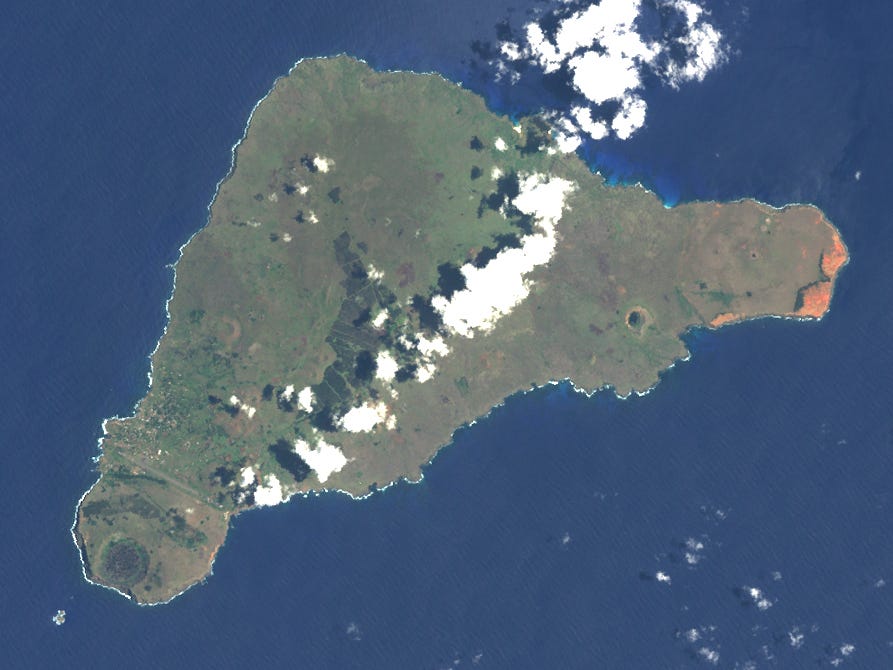Easter Island
Image source: Rapa Nui
The story of Easter Island has always fascinated me, partly because of the huge, enigmatic statues, but also because Easter Island was (before European contact) a miniature analog to the Earth. It was a little world, isolated in the Pacific, which was colonized by human beings only about 1000 years ago. Within a 500-year period, there was a population explosion, environmental degradation and population collapse. I will retell that story very briefly here. Then I will consider some of its implications for human nature.
The original colonists found a paradise. Food was abundant. They brought no diseases with them. With abundant food and land, there was probably little conflict between them. For many generations, they lived lives free of hunger, disease and war. Naturally, the population grew.
When the colonists first arrived, they could easily kill dolphins and seabirds for food, so they did. The island was covered in a lush forest of huge trees, which could be cut down for canoes or timber. So, the colonists cut them down. Eventually, the dolphins and seabirds disappeared, and the Easter Islanders switched to agriculture as their main source of food.
As their population expanded, they spread over the island, and formed different clans in different areas. Those clans seem to have lived together in peace, as they traded resources and probably mates with each other. The human population continued to grow. Eventually it reached a peak of 15,000 or more, all descended from a few original colonists.
At some point, close to the peak of their population, the Easter Islanders decided to build giant stone statues. No one knows why. Polynesians have a cultural tradition of building statues and “totem poles”, but not on that scale or in that peculiar, monotonous style. For whatever reason, the Easter Islanders built those strange statues for which the island is famous today.
Then, during the height of their statue-building mania, they descended into war and cannibalism.
When they reached their peak population, the island had been deforested. There were no trees left for building canoes. The landscape had been badly eroded, and much of the soil had washed into the sea. The next generation was growing up, and it was twice as big as the previous one. However, this time the food production could not be expanded. In fact, it was contracting due to the degradation of the environment. The Easter Islanders could not shift to a new source of food to feed their growing population, as they had done before.
So, they went to war. They fought over the precious land on which to grow food. They also fought to obtain the only alternative food available: human meat. They began to eat each other. Genocidal and cannibalistic warfare literally consumed the islanders, until most of the population was gone. The remnant population lived on, in a state of desperate poverty and endemic warfare, until Europeans showed up. Then things got even worse for most of them.
During the collapse, the Easter Islanders pushed over their statues. The Europeans found the statues lying on the ground, often broken into pieces. They couldn’t understand how the people of the island, who were few in number and very poor, could have built these strange monuments.
What lessons can we learn from the natural experiment of Easter Island?
The most important lesson is just that human beings are not magic. Our culture has a myth that human nature is essentially rational and altruistic. According to this myth, human nature should generate a utopia of peaceful cooperation. The natural experiment of Easter Island demonstrates otherwise. Isolated in a rich environment, human nature generated runaway growth, environmental degradation, and a catastrophic collapse.
Easter Island also shows that humans often ignore their biggest problems, rather than trying to solve them. Instead of figuring out how to sustain their little paradise, the Easter Islanders made statues.




